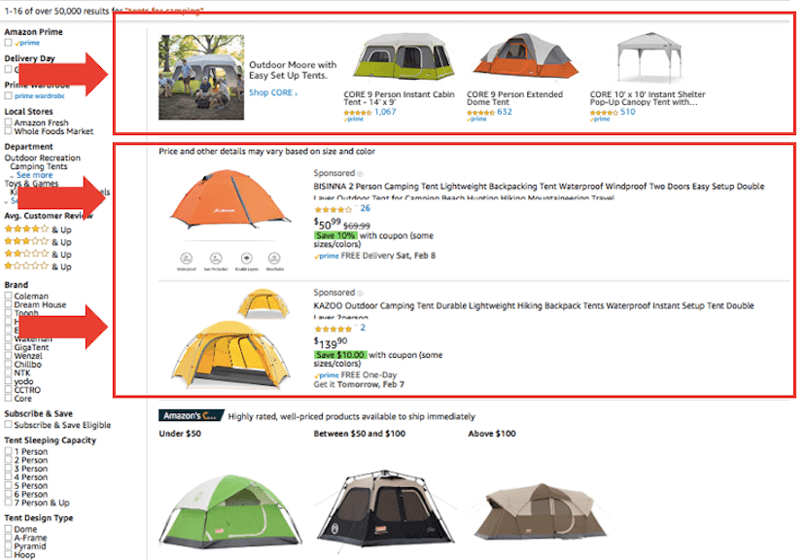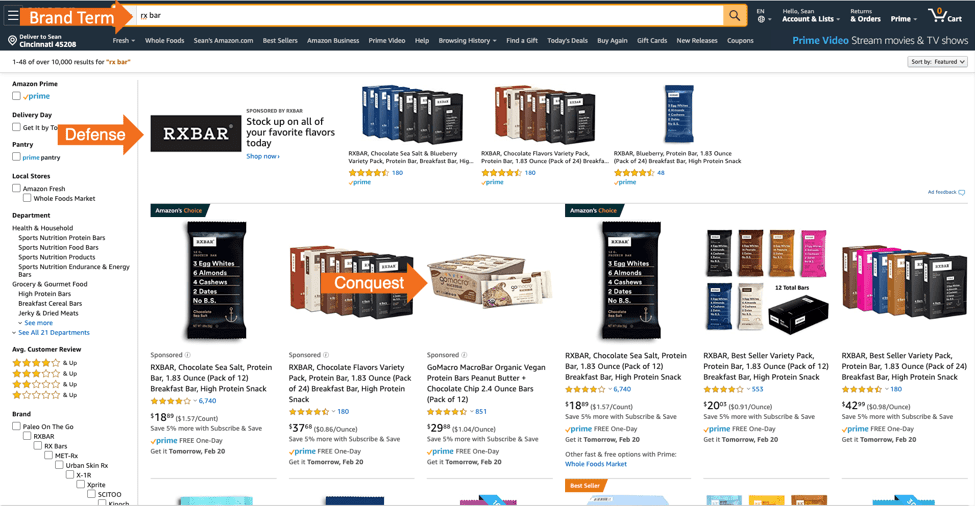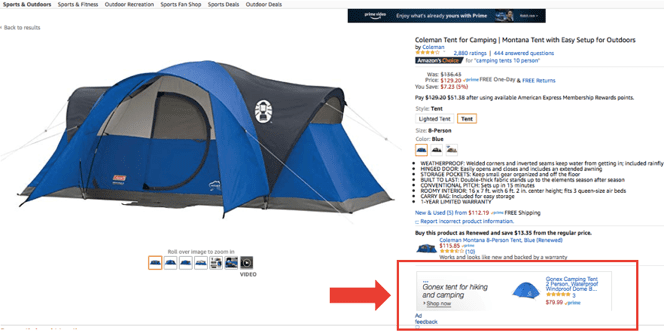How Brands Lure Consumers Away from Competitors on Amazon


News & Insights
Amazon is named for the world’s largest jungle, a hyper-competitive ecosystem where animals fight for survival every day. All things considered, the name is a perfect fit for an e-commerce giant packed with countless brands battling for shoppers around the clock. And that’s no accident—Amazon drives down prices by actively encouraging aggressive competition.If your brand is building a presence on Amazon Seller Central, one of the most common tactics you’ll need to combat are competitor brands that use advertising to lure your consumers away, something referred to as “conquesting.” It’s common because it’s effective, but there are ways to get ahead of the curve. Let’s take a look at how conquesting works—and how your brand can eat rather than be eaten.
Searching is a major part of shopper behavior on Amazon. To paint an accurate picture of just how major, consider that two-thirds of U.S. shoppers search for products on Amazon instead of Google. On the positive side, Amazon offers unfamiliar shoppers a chance to find your brand and its products. On the negative side, clever competitors can use search to steal away your existing and potential customers.When Amazon returns search results—what’s referred to as a SERP (Search Engine Results Page)—they also serve up several ads promoting relevant, and perhaps competitive, products. These ads are based on keywords that brands bid on. Brands can also bid to have their ads appear in SERPS for a particular product category and even specific ASINs (Amazon’s product ID system). For example:

The SERP displays products based on keywords brands bid on.
Ads on SERPs comprise the large red highlighted area at the top and several smaller ones throughout. The large ad is called a Sponsored Brand Ad and features a logo, a headline and up to three products. For busy shoppers looking for a quick purchase, these can be quite enticing. You can almost hear a shopper thinking, “Hmm, maybe this is the best option” and clicking to investigate. This is more likely, of course, when the featured product is competitively priced and has strong star rating. (To learn more about improving your star rating, read this post.)The other ads embedded provide even more opportunities for brands to conquest. All of them operate on a Pay-per-Click (PPC) basis, which means you only pay when a shopper clicked (which doesn’t, of course, guarantee a purchase).Most conquesting happens when your competition bids on your brand name and product name terms. Here is an example where GoMacro is bidding on Sponsored Product Ads for RX Bar. RX Bar is doing a nice job of playing defense since they are showing up on the Sponsored Brand Ad section and the first two sponsored product ads.

Rx Bar fights against the competition by bidding on their own products.
Brands can protect themselves by bidding on their own branded terms to ensure their customers are not siphoned away. Here is a nice example of Tide defending against conquesting of the “Tide” search term. They show up in the Sponsored Brand Ad section and the three Sponsored Product Ad sections.

Tide employs a similar strategy to Rx Bar.
If a shopper finds your product on a SERP—whether via an ad or an organic listing—you’re still not out of the woods. Perhaps nothing speaks to how competitive the Amazon ecosystem is than the fact that one brand can advertise on a competitor’s product listing pages. For example:

A great way to advertise your product is to target your competitors’ pages.
These PPC display ads also appear based on keywords, product categories and specific ASINs.
Even the biggest brands would go broke if they weren’t strategic with their ad spend on Amazon. Knowing which products you should strategically advertise—and under which conditions—hangs on a host of factors, all of them influenced by your budget, the margins on the product in question, its star ranking and more. The same factors apply to deciding when to concern yourself with an aggressive competitor out to conquest and when to sit back and happily let them burn through their ad budget.At Amify, we get all the intricacies of Amazon advertising and can help you come up with a strategic plan that delivers demonstrable results and a robust ROI. So contact us to discuss how we can help your brand conquer anyone standing in your way.
Learn more about how we can help your Amazon business succeed!